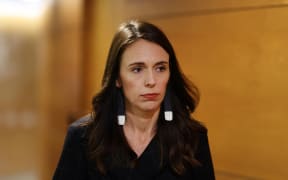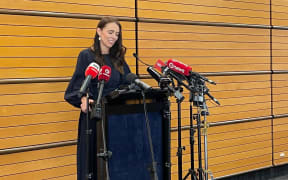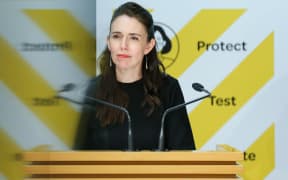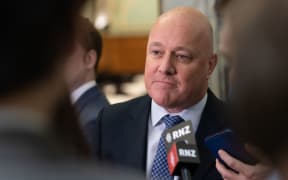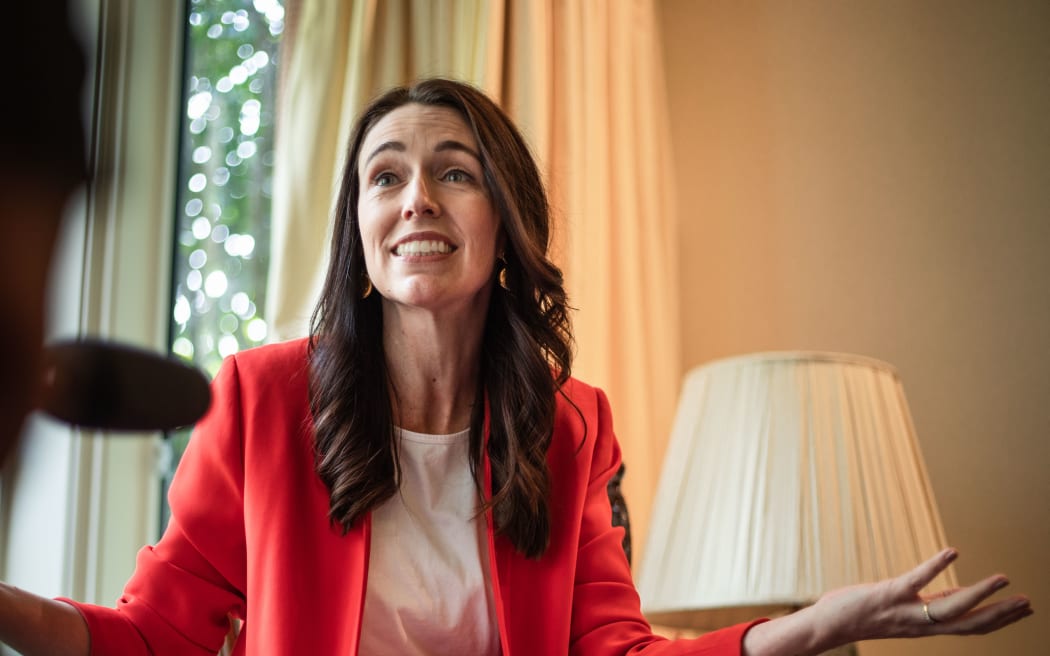
Jacinda Ardern's replacement as Labour leader and Prime Minister could be chosen with days - or weeks. Photo: RNZ / Samuel Rillstone
Prime Minister Jacinda Ardern dropped a huge bombshell when she announced her resignation on Thursday afternoon.
Among the many questions that come in the aftermath is: Who will take over as Prime Minister? And when?
Ardern herself gave some indications on the latter, at least. Here's what you need to know.
A new PM within days?
Ardern's replacement as leader of the Labour Party will take over as Prime Minister. The party's own process for picking a leader, therefore, is effectively what decides who gets the gig.
The first step, Ardern said, was for caucus to decide within seven days if there was someone within their ranks that at least two-thirds agreed should be leader. Already, the caucus has decided it will establish this via a vote this Sunday.
If someone gets two-thirds of the 65 votes (44 is the magic number) in Labour's caucus, they will become leader.
Ardern indicated she would issue her resignation as prime minister to the governor general "soon after", if that happened. A new PM could, therefore, be in office by early next week.
This will be Ardern and the party's hope. But in reality, the field looks fairly open (Deputy Prime Minister Grant Robertson has ruled himself out as a candidate, as has deputy Labour leader Kelvin Davis) so a two-thirds majority may be hard for any one person to muster. What would happen then?
The longer path to a replacement
Ardern was herself elected as leader in 2017 by the Labour Party caucus unopposed. Before that, there were leadership contests that took much longer.
Where the caucus can't find a leader with two-thirds majority support, a contest goes to the wider Labour Party membership and its union supporters. This can be a more bruising and take quite a bit longer.
The leadership vote in this scenario is weighted between party members (40 percent), caucus members (40 percent) and affiliated unions (20 percent). The battle for their support can take several weeks.
In 2014, David Cunliffe resigned as party leader on 27 September, replaced by an interim leader. Nominations for a new leader closed on 14 October and a contest between four candidates ran until 18 November. Andrew Little edged out Grant Robertson for the job.
A repeat of the 2014 timeline would see a new prime minister in place some time around the third week of March.
The only other time this voting system was used in the Labour Party was for the election of Cunliffe in 2013. It was quicker that time, taking a little over three weeks. But there were only three candidates that time and Cunliffe won comfortably.
What to expect
Labour's leadership will want to wrap this up quickly. It is likely they will be trying to gently persuade caucus to winnow the field and coalesce behind one candidate who can take the job unopposed on Sunday.
Realistic candidates for the role will be jockeying to get into that box seat as the favoured candidate to effectively be crowned as leader and PM.
It's perfectly possible, however, that such a large caucus is unable or unwilling to agree in sufficient numbers and the contest will go wider and longer than many in the party would have hoped.
In that scenario, Ardern will of course have to continue on as prime minister until the party makes its call. She has indicated she will stay on as the MP for Mount Albert, regardless, until April, so there is no risk of an accidentally empty prime ministerial chair in the Beehive.
At a glance
- Jacinda Ardern's last day as prime minister will be 7 February unless her replacement is chosen before this
- Ardern will remain the member for Mt Albert through to April, which she said was to spare them and the country a by-election. Beyond this she has no plans or next steps as yet
- Ardern said she would depart Parliament in April, 15 years after first being sworn in
- The Labour caucus has agreed a vote for the next leader will take place on Sunday 22 January
- One individual will need more than two thirds support within caucus to become the new leader and prime minister and the caucus has seven days to ascertain this. If this does not happen, the leadership contest goes to the wider membership
- Ardern said she would not back any single candidate for the leadership
- Grant Robertson would not be putting himself forward to be Labour's new leader and prime minister, Ardern said
- The general election will take place on 14 October 2023
Who will be throwing their hat in the ring for the leadership?
- During her announcement, Ardern said Deputy Prime Minister Grant Robertson would not be putting himself forward for the leadership and prime minister. Robertson told an RNZ reporter "In 2014 I said I didn't want the job and nothing's changed"
- Minister David Parker tweeted "For Grant" but clarified to an RNZ reporter that this was an inside joke. As whether it was a good time to make a joke like that, he laughed and said: "It worked for me."
- Minister Chris Hipkins said "I'm not going to get into a discussion about that at the moment" but he wasn't ruling it out
- Minister Kelvin Davis ruled himself out and said "No, I won't be contesting, I'll be supporting whoever is the new leader. Definite no"
- Minister Michael Wood would not say whether he would put himself forward
- Minister Megan Woods said she would not rule herself out
